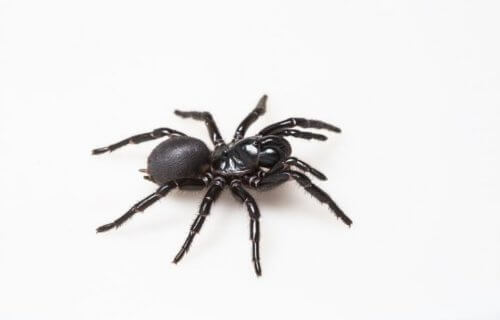
BRISBANE, Australia — Fear of spiders, or arachnophobia, is one of the most common phobias. According to a new study, however, our eight-legged friends may turn out to be life savers. Researchers from the University of Queensland report that venom from one particular type of spider is the integral ingredient in a new life-saving treatment for heart attack victims.
The spider in question, known formally as the Fraser Island (K’gari) funnel web spider, is considered among the world’s most deadly. Ironically, a molecule extracted from this spider’s venom is being used to produce a new drug candidate capable of both preventing heart attack damage and extending the life of donor hearts used for organ transplants.
Study authors explain that the new drug actually blocks a “death signal” sent from the heart during a heart attack.
“After a heart attack, blood flow to the heart is reduced, resulting in a lack of oxygen to heart muscle,” study co-author Dr. Nathan Palpant, UQ’s Institute for Molecular Bioscience (IMB), says in a university release. “The lack of oxygen causes the cell environment to become acidic, which combine to send a message for heart cells to die. Despite decades of research, no one has been able to develop a drug that stops this death signal in heart cells, which is one of the reasons why heart disease continues to be the leading cause of death in the world.”
The drug candidate, a protein called Hi1a, was tested by exposing beating human heart cells to heart attack stressors. Then, the drug was added to the mix to see if it improved outcomes.
“The Hi1a protein from spider venom blocks acid-sensing ion channels in the heart, so the death message is blocked, cell death is reduced, and we see improved heart cell survival,” Dr. Palpant comments.
Spider venom treatment could be major breakthrough for transplant patients
If approved, this new drug would certainly be a game changer: there are currently no drugs available capable of preventing heart attack caused damage.
“This will not only help the hundreds of thousands of people who have a heart attack every year around the world, it could also increase the number and quality of donor hearts, which will give hope to those waiting on the transplant list,” notes Professor Peter Macdonald from the Victor Chang Cardiac Research Institute. “The survival of heart cells is vital in heart transplants — treating hearts with Hi1a and reducing cell death will increase how far the heart can be transported and improve the likelihood of a successful transplant.”
“Usually, if the donor heart has stopped beating for more than 30 minutes before retrieval, the heart can’t be used – even if we can buy an extra 10 minutes, that could make the difference between someone having a heart and someone missing out. For people who are literally on death’s door, this could be life-changing,” he adds.
These findings build off of earlier work by another of the study’s co-authors, Professor Glenn King, who had previously discovered a small protein in the venom of the Fraser Island (K’gari) funnel-web spider capable of improving recovery in stroke survivors.
“We discovered this small protein, Hi1a, amazingly reduces damage to the brain even when it is given up to eight hours after stroke onset,” King says. “It made sense to also test Hi1a on heart cells, because like the brain, the heart is one of the most sensitive organs in the body to the loss of blood flow and lack of oxygen.”
“For heart attack victims, our vision for the future is that Hi1a could be administered by first responders in the ambulance, which would really change the health outcomes of heart disease,” he continues. “This is particularly important in rural and remote parts of Australia where patients and treating hospitals can be long distances apart – and when every second counts.”
These findings can also help in the transfer of donor hearts for cardiac transplantation. The drug/protein looks to be able to facilitate the transport of donor hearts over longer distances, thus increasing the network of both available donors and recipients.
Moving forward, researchers are hoping to begin human clinical trials for both stroke and heart disease in about two to three years.
The study is published in Circulation.
